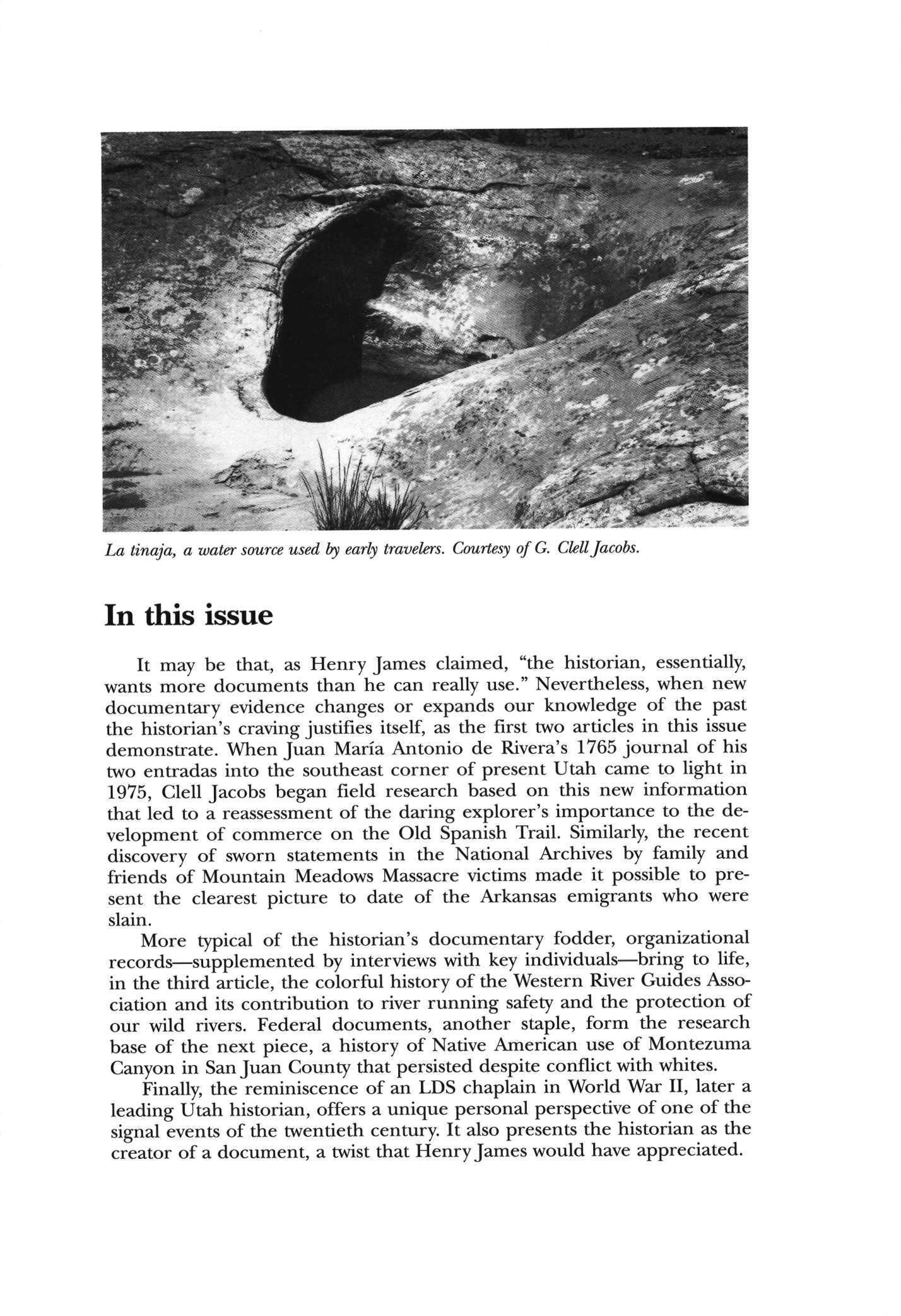
2 minute read
In This Issue
La tinaja, a watersource used by early travelers. Courtesy of G. Clell Jacobs.
It may be that, as Henry James claimed, "the historian, essentially, wants more documents than he can really use." Nevertheless, when new documentary evidence changes or expands our knowledge of the past the historian's craving justifies itself, as the first two articles in this issue demonstrate. When Juan Maria Antonio de Rivera's 1765 journal of his two entradas into the southeast corner of present Utah came to light in 1975, Clell Jacobs began field research based on this new information that led to a reassessment of the daring explorer's importance to the development of commerce on the Old Spanish Trail Similarly, the recent discovery of sworn statements in the National Archives by family and friends of Mountain Meadows Massacre victims made it possible to present the clearest picture to date of the Arkansas emigrants who were slain.
More typical of the historian's documentary fodder, organizational records—supplemented by interviews with key individuals—bring to life, in the third article, the colorful history of the Western River Guides Association and its contribution to river running safety and the protection of our wild rivers Federal documents, another staple, form the research base of the next piece, a history of Native American use of Montezuma Canyon in San Juan County that persisted despite conflict with whites.
Finally, die reminiscence of an LDS chaplain in World War II, later a leading Utah historian, offers a unique personal perspective of one of the signal events of the twentieth century. It also presents the historian as the creator of a document, a twist that Henry James would have appreciated.








